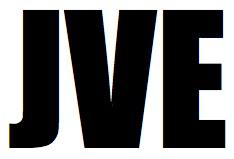BETWEEN: THINGS, Thomas Keenan, Eyal Weizman

BETWEEN: THINGS
On forensics
Thomas Keenan, Eyal Weizman
2011 January 15 16:00
Jan van Eyck Academie Maastricht
http://www.janvaneyck.nl
BETWEEN is a new series of events at the JVE Design department, initiated by advising researchers John Palmesino and Florian Schneider. The series, which invites two guests to exchange thoughts and experiences about a problem from different points of view, kicked off last September with a session on the issue of ‘Borders’. In the year 2011, BETWEEN will start with a double presentation by Eyal Weizman, director of the Center for Research Architecture at Goldsmiths College (London) and Thomas Keenan, director of the Human Rights Project at Bard College (New York).
The theme of this second BETWEEN session will be ‘Forensics’. The principle of forensics assumes that events, as complex and multi-valented as they might be, are registered within the material properties of objects, bodies or spaces – relational objects that can be referred to as ‘things’. Today’s legal and political decisions are based upon the capacity to read and present DNA samples, 3D scans, nano-technology, the ‘enhanced vision’ of electro-magnetic microscopes and satellite surveillance, and extend from the topography of the sea bed to the remnants of destroyed or bombed-out buildings. Architecture and its representations – either as remote sensing models, satellite imagery, 3D animations and physical models – also enter ever more frequently into courts and political forums. But rather than presenting conclusive, objective ‘vehicles of truth claims’, forensics is also inclined towards complex, sometimes unstable, and often contradictory accounts – a fuzzy forensics of statistics and probabilities.
The word forensics derives from the Latin forensis, which means ‘forum’ and refers to the practice of making an argument by using objects before a gathering, such as a professional, political, or legal forum. Forensics was part of rhetoric, but refers to the speech of objects or things. In the forensic process, objects address the forum. However, things need their ‘translators’ to interpret and mediate their speech. Because the thing speaks through – or is ‘ventriloquized’ by – its translator, the object and its translator make a necessary and interdependent duo. To refute a legal/rhetorical statement, it suffices to refute one of the two: to either show that the object is inauthentic or that its interpreter is biased. When evidence is given the capacity to speak and objects are treated as ‘witnesses’, might they also possess the capacity to lie?
